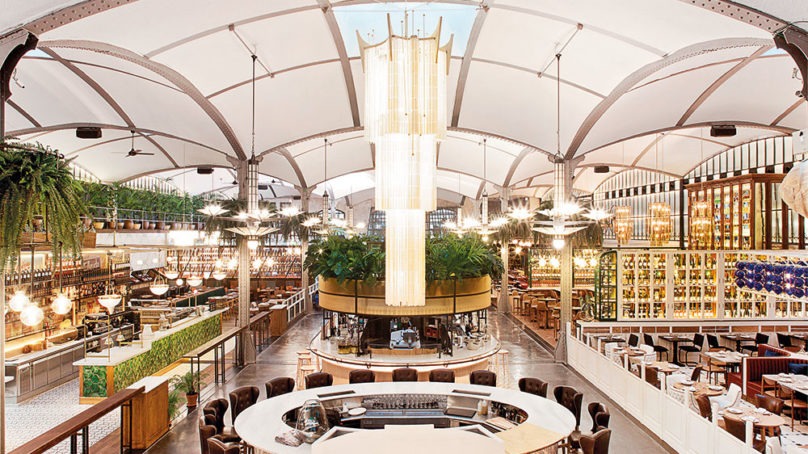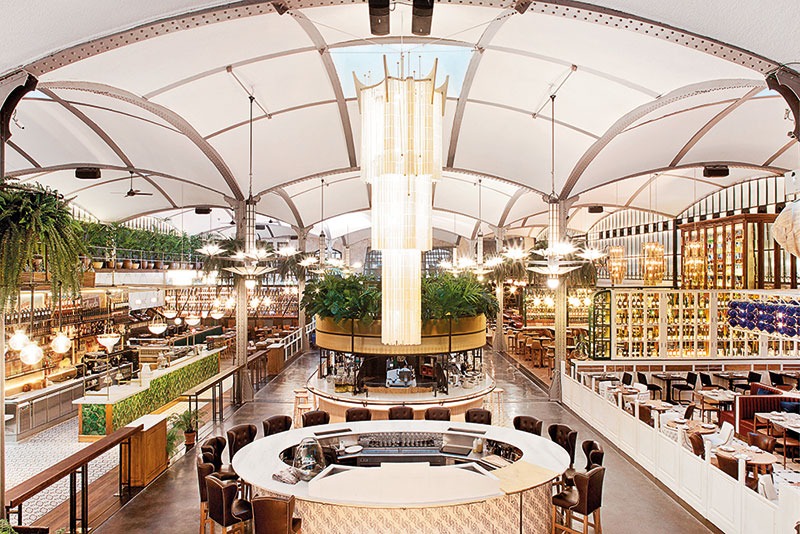Encompassing a refined dining experience in a market setting, the food hall concept brings together a range of several independent outlets, each offering their own specialty, yet forming one entity. Ralph Nader, CEO of Amber Consulting, discusses the fancier and ‘foodier’ cousin of the food court
In contrast to ordinary restaurants, food halls provide diners with a variety of options, capturing the shift in people’s culinary preferences from ubiquitous international meals to more intimate local choices. Expect to find locally sourced food and different types of F&B outlets, as well as retail kiosks, in a shared dining space.
A rewarding idea
Food halls are more than just somewhere to eat; they’re an alternative gathering spot, where diners can enjoy a meal, while soaking up a lively ambiance. Thus, a food hall is a holistic experience, combining food, drink, socializing and entertainment.
This shifting behavior in customers’ preferences is due to a number of factors that are mainly related to elements associated with the concept of a food hall, namely:
• Focusing on serving quality rather than quantity
• Offering a live show to customers in addition to its main dining purpose
• Proposing a wide array of cuisines in one entity
• And finally, giving guests the chance to experience ‘upscale’ street food
Aside from becoming the customer’s preferred choice, food halls also present an economical solution for independent restaurateurs by minimizing costs, such as rental space and maintenance fees, among others.
Minimizing the scale
Increasingly, architects are seeking to develop the food hall concept worldwide, adopting an intimate design for small-sized spaces. Instead of offering a vast seating area, food halls are providing smaller, cozier seating set-ups, spread across the location. Counter seating is another popular concept in food halls, ideal for both solo diners and small groups keen to converse and socialize. Counter seats also come in handy for walk-in diners who don’t want to make reservations in advance.
A concept for all
Food halls are becoming more prevalent on the ground floor of mixed-use residential buildings in urban areas, providing a key amenity in both commercial and residential buildings, while attracting people who are looking for somewhere to stay and play. Equipped with event spaces, grocery stores and entertainment facilities, such as live music, food halls aim to attract a wide-ranging clientele, from millennials and foodies to families with young children.
The future of all-day dining
Many of the major F&B industry players have realized that with diners’ preferences rapidly evolving, providing a diverse range of experiences is a key part of staying relevant and securing return custom. Against this backdrop, a broad range of providers are turning to the food hall concept and choosing to eliminate their ‘all-day dining’ and outdated ‘buffet’ options. The characteristics of the buffet concept, in particular, are in stark contrast to those of food hall outlets in that buffets:
• Must be always full
• Focus on quantity more than quality
• Offer a standardized experience
• Have a limited number of hours per day
• Are boring theme-night related
Harrods mall was the one of first to initiate the food hall concept in London, thereby triggering a major domino effect, while a separate, hugely successful food hall story began unfolding in Torino in 2007. Eataly’s idea was simple: to gather under one roof high-quality food at sustainable, reasonable prices, while creating an informal, relaxed and simple place to eat, shop and learn. Today, Eataly has expanded across more than 40 locations throughout Italy and beyond.
The food hall has also had a domino effect on hotels, prompting many to rethink their F&B offerings. Instead of focusing on just one restaurant, some have decided to create a space filled with plenty of options and a high-end atmosphere.
“The typical breakfast, lunch, dinner – appetizer, entree, dessert model is not something that our guests are responding to anymore,” says Beth Scott, who’s in charge of restaurant concepts for Hilton Worldwide’s 3,900 properties. The Plaza Hotel in New York City features a food hall in its basement. Serving artisan food and takeout options, this set-up has become a model for many hotels looking to adopt the idea.
A risky business to mitigate
While the food hall concept offers several advantages, such as the opportunity to reduce overheads and minimize space, it is not risk-free. Food halls may appear attractive right now, but they share the same pros and cons as any other restaurant, with no guarantees of success. As with any booming trend, the fear that people will become bored is often justified. Aside from facing these very real risks, some vendors also find that the bulk of their visitors opt for small-scale purchases, such as coffee or a sandwich, which makes survival difficult, especially with heavy human resource costs.






















